- Home
- Tom Clancy
Battle Ready Page 34
Battle Ready Read online
Page 34
BY THE TIME he took command of the MEF in June 1994, U.S. forces were out of Somalia, and the UN mission was sputtering out. Though Zinni did not forget the lessons of Somalia, he didn’t expect to return to that country.
In a few months, he was thrown into the Somalia disaster for a third time.
UNITED SHIELD
Tony Zinni:
During the summer of 1994, the UN decided to end the UNOSOM mission and withdraw UN forces from Somalia. The date set for the withdrawal was March 1995.
This was going to be a complicated move: Since forces from several countries would be involved, there would be coordination problems; since the pullout would be phased, the last forces to leave were vulnerable to attack; and credible—though unsubstantiated—reports of handheld surface-to-air missiles made a withdrawal by air risky. As a result of these threats, the UN requested U.S. protection for the withdrawal. Though the Clinton administration was not excited about renewing its involvement in Somalia, the international forces on the ground had accepted the mission at our request. The administration felt responsible for their safety.
That August, less than two months after I took command, I MEF received a warning order that we were to lead a Combined Task Force to protect the UN withdrawal. I MEF was the obvious choice for the mission: We already had responsibility for crisis response in their portion of Africa; the SAM threat required an amphibious withdrawal; and I MEF had conducted Operation Restore Hope in 1993, so the staff was already familiar with the situation.
We knew it would be a difficult assignment. The international forces would have to execute extremely complex tactical tasks (tough even for U.S. units); and interoperability problems with doctrine, procedures, equipment, and language could compound the difficulty.
The good news was the planning time. We’d have five months to plan, coordinate, and practice the mission.
“Plans are nothing, but planning is everything,” Eisenhower said, possibly apocryphally. Whether he said it or not, the saying is true. We had a lot of time. I wanted to use it all to plan exhaustively, think through every possibility, and cover every contingency (or branches and sequels, in military terms). One innovation in our contingency planning was to produce a “playbook” that gave us a course of action if one of the possible scenarios occurred. At the end of the operation, I reviewed the playbook and found every event that occurred covered by a contingency plan.
The entire five months, from August to mid-January, was devoted to planning and coordination. This was the first phase of the operation. The second phase, deployment, rehearsal, and positioning, was scheduled from mid-January to the beginning of February. Phase three, setting conditions for the withdrawal and assuming of control of UN forces, was scheduled for February 8 to 28. Phase four, the execution, was scheduled for February 28 to March 3. Our fifth and final phase, the redeployment of our forces, was planned to last from March 4 until the end of that month.
The operational tasks during the execution phase were extremely complex. We would conduct two night amphibious landings at the Mogadishu port and airfield; two reliefs in place of UN forces; a withdrawal and passage of lines by the Pakistani Brigade through our coalition lines (U.S. and Italian Marines); a day and night defense of the air- and seaports; a Non-combatant Evacuation of UN, media, and civilian agencies personnel; and two night amphibious withdrawals. These difficult tactical evolutions were tough enough, but the mix of coalition forces, the nighttime executions, and the prospect of doing these under fire compounded the difficulty exponentially.
We had another serious concern—civilian crowds, mobs, and looters . . . always a possibility in Somalia. Mobs especially were always a major problem . . . and they were one of the warlords’ most effective weapons. They could effectively block many of our actions, yet they were only very rarely a physical threat to our troops. A response using lethal force was obviously unjustified; but nonlethals had been very hard to come by. That situation was about to change.
Early in our planning, I pressed for a more substantial nonlethal capability . . . a search that yielded surprisingly good results. We were able to gather a significant and varied arsenal of gadgets, ranging from rubber bullets to sticky foam guns to high-tech acoustic devices, microwaves, and lasers. During the coming months, we trained our forces in these capabilities, while the lawyers developed new rules of engagement for them. (They prohibited some of the more experimental devices, since there were no details on their effects.)
Our attempts to prevent unnecessary loss of lives actually sparked controversy. “You’re disarming our Marines!,” claimed alarmed op-ed articles. Other articles by military professionals claimed: “Our troops will be confused. They won’t know the difference between ‘lethal’ and ‘non-lethal’ weapons.” When I threw this question at my Marines, they told me, “Don’t worry, sir. We know the difference.” They all wanted and needed this capability.68
We took the plan to General Peay on November 8; and to the Joint Chiefs a little over a week after that. Quick approval came. Though the chairman of the Joint Chiefs, General Shalikashvilli, remained opposed to OOTWs and was in no hurry to get reengaged in Somalia, he knew this was an obligation the Clinton administration had to take on. One month later, on December 16, President Clinton approved the plan and gave the go-ahead for the operation.
In early January, we held our final planning conference at CENTCOM; and on the fourteenth the joint task force United Shield was formally established. That day I gave the CINC a final brief, at which point General Peay added a highly unusual wrinkle to the command structure. Normally, the JTF commander reports directly to the CINC. But for this particular operation, General Peay decided that I would report to his naval component commander, Vice Admiral Scott Redd, rather than directly to him.
Peay’s decision raised a serious question: Was I going to be running the JTF or was Admiral Redd? And yet I appreciated the CINC’s logic: This operation required a large number of supporting U.S. and coalition ships (during the actual operation we had twenty-three); directing this large seaward component was potentially a huge—and unnecessary—distraction.
In the event, the arrangement presented zero command problems for either of us. Scott Redd felt strongly that United Shield was my operation, and his role was to ensure that I got what I needed. He and I worked closely and productively together. When the time came, Scott attended the final CENTCOM planning sessions, and then I flew with him back to his headquarters in Bahrain, where I received a firsthand experience of another rationale for General Peay’s command arrangement. Scott’s was the only CENTCOM headquarters near our AOR, making his people more quickly responsive to our needs. During the operation, he was able to instantly respond to several immediate requests for support, not the least of which was the rapid dispatch of a U.S. cruiser to provide us a last-minute naval gunfire capability.
I was also fortunate in having Rear Admiral Lee Gunn (from the U.S. Third Fleet) as my deputy commander and the commander of my JTF naval component. Because Lee and Scott were able to work all the ship issues, we were able to keep our total focus on the withdrawal.
After Bahrain, I went to Nairobi, Kenya, to meet the military chief of staff, General Mohamed, and other government officials. We intended to use Mombasa as a base for our AC-130 gunships and as a logistics and staging base (to stage forces that would link up with ships sailing in from the Pacific).
In Nairobi, we picked up Ambassador Dan Simpson, the President’s special envoy to the Somalia mission, and Ambassador David Shinn, the State Department’s Africa bureau head, and then flew to Mogadishu to coordinate with the UNOSOM forces and meet with warlords.
In Somalia, General Aboo Samah, the Malaysian commander of the UNOSOM forces, and Ambassador Victor Gbeho, the special representative of the Secretary-General, were professional and cooperative; and the initial meetings with warlords were also encouraging. Essentially, our message to the warlords was: “Look, we’ll take you on if we have to, but that’
s not the point. We’re not looking for trouble. We just want to get these people out of here. So lay back. It’s over. Let’s get these people out of here without making waves.” And they all bought that.
But our visit to Aideed was a near disaster.
Aideed was never the most punctual of men, and, true to form, he was a little late that day. But when he came rushing in, he was in a very up mood—in his statesman mode, which was fine with me. He’d just been to a political rally, which had gone well; the UN departure favored his interests and objectives; so he seemed happy to see us.
For some reason, however, from the very start of our discussions, Ambassador Simpson took a very provocative line with Aideed. He clearly wanted to get in Aideed’s face (and, God knows, there was plenty of bad blood between our people and Aideed); and here was his chance to show Aideed that he was a very hard-ass guy who couldn’t be pushed around by a two-bit warlord. The discussion quickly grew heated; threats were tossed back and forth; and the whole situation seemed headed for a bad crash.
By then, Aideed had switched into his black mode; my brain was working on all cylinders; and I was really pissed. “What in the hell are we doing?” I was thinking. “We don’t need to piss Aideed off and take on more enemies than we need. We just want to get these troops out of here and avoid confrontation.”
Somehow we got through the rest of the meeting without a renewal of open warfare.
At the conclusion of the meeting, we stepped outside with Aideed for a photo at the bottom of the building steps. Afterward, as the others were preparing to leave, Aideed grabbed my arm and drew me aside.
“Zinni,” he said, “you look worried.”
“You’re right,” I told him. “We don’t need a confrontation at this point,” I continued. “I’m here to protect the UN, and I will; but we don’t need more casualties on any side.”
“Don’t worry, I will not attack the UN or interfere with the withdrawal,” he promised. “But,” he added, “I don’t control all the militia or gangs; and the militia and gangs at the end of the airport will fight you. I will try to control things where I can.”
It was good to know that Aideed had sense enough not to be thrown by the provocations. He knew he was getting what he wanted—the UN’s departure; he’d have been nuts to jeopardize that success. His warning, meanwhile, proved accurate; but he also delivered on his promise to control whatever his forces were able to control.
I immediately left Somalia for wrap-up meetings back in Bahrain, then flew on to Pakistan to brief General Abdul Waheed, the chief of staff of the Pakistani military. Since his forces had suffered more casualties in Somalia than any other national force, he wanted to be sure the scheme for withdrawal was sound. His support meant we were now completely on track.
I then headed on to Kenya, to board the USS Belleau Wood, which would be my command ship.
In addition to our twenty-three ships, the force we assembled for United Shield included and totaled 16,485 soldiers, sailors, airmen, and Marines from seven nations. It also included the Pakistani Brigade and Bangladeshi Battalion that would be the last UNOSOM forces that would hold the airport and port and would be put under my command for the final withdrawal.
We sailed from Mombasa on the first of February; stopped off the coast of Malindi, Kenya, for rehearsals of our landing and withdrawal; then moved north to begin our third phase—setting the conditions for the withdrawal and assuming control of the UN forces.
We arrived off the coast of Mogadishu on the seventh of February and began setting the stage for the final withdrawal. For the next three weeks, the UN drew down its presence until they controlled only the port and airfield. Meanwhile, United Shield forces prepared for the final withdrawal. This would take four days. During this period, I began taking increasing responsibility for functions like medical care and fire support, as we moved toward the moment when General Aboo passed command of the UN forces to me.
In addition to our physical preparations (defensive positions, barriers, and the like), we conducted a series of sand table exercises, thoroughly rehearsing our plan with the UN forces, to ensure everyone knew his role cold. Again, we had time—the rarest commodity—and I intended to use every second to our advantage.
Mogadishu’s airfield is located near the seashore and south of the port. Just south of the airport is a wide expanse of beach. Our plan was to land our forces, take control of the port from the Bangladeshi Battalion, then hold it and move them out by ship. The Pakistani Brigade which held the airport would then withdraw through our lines to the port, where we would also move them by ship.
During these operations, United Shield forces would maintain control of the beach areas east and south of the airport. After the UN forces had departed, we would move out of the port, then off the high dunes overlooking the airport, and finally off the beach south of the airport. We would, in effect, pull back from north (the port) to south (the beach below the airport). This would be the most dangerous phase of the operation, since we expected militias, gangs, and mobs to close in rapidly behind us. Our physical preparations involved extensive engineer work; we erected barbed-wire obstacles and huge sand mounds to cover our withdrawal.
Though our headquarters for the Combined Task Force remained aboard the Belleau Wood, my Special Operations component established a forward command post ashore (called “the Advanced Operating Base”). The special ops forces also provided Coalition Support Teams to each of the allied forces to ensure close coordination and communications. As soon as we arrived off Mogadishu, a shipboard heliborne Quick Reaction Force was activated as a reserve. Another critical component was the Explosive Ordnance Disposal unit, whose task was to destroy the considerable amount of ammunition and captured weapons that the UN forces had amassed over the years. Though the daily explosions from the EOD were necessary, they were often unnerving.
My landing force was composed of U.S. and Italian Marines. The U.S. Special Forces and U.S. SEAL units also provided valuable capabilities to the forces ashore as well. Each of our four forces had sniper teams; these proved to be key assets when the withdrawal began.
On the ninth of February, Kofi Annan, then the head of the UN peacekeeping organization, arrived to review the plans for the withdrawal, and also to visit our forces and ships. It was clear that Annan understood the complexity of the operation and appreciated what we were doing. To symbolically mark the entrusting of UNOSOM forces to our protection, he presented me with a UN beret.69
Several days later, a formal ceremony at the airport passed control of the UN forces from General Aboo’s command to mine.
By then, I was greatly impressed by the competence and professionalism of the Pakistani and Bangladeshi units. We had loaned armor and other equipment to the Pakistanis for their mission in Somalia. Now we had to recover and evacuate this equipment. When our U.S. maintenance personnel recovered the tanks, armored personnel carriers, and other equipment, they found the gear in terrific condition. “This stuff is like new,” a maintenance guy told me. “Every single tool in every single kit is there.” The pride of these coalition units gave me confidence that their parts in the operation would go without a hitch.
The media was not so easy to handle. They bristle at any form of control; convincing them to form a press pool proved to be particularly difficult; and loose media were running around Mogadishu unencumbered by pool restrictions. I was determined that the media who joined the pool would be rewarded: They were at all the significant locations during the operation and were denied access to commanders only when that could interfere with the mission. I spent a great deal of time briefing the pool and providing them background. By the end of our operation, the relationship that had developed with the pool was superb, benefiting both sides—the best cooperation between the media and the military I had ever experienced. This took a lot of effort and trust on both sides, but we made it work.
As the three weeks of the preparation phase came to a close, we could see the probl
ems forming that we would face during withdrawal. The port and airfield were full of material soon to be abandoned by the UN; and these “prizes” were beginning to tempt the desperate Somalis. Soon they were gathering ominously in growing numbers around the reinforced gates and walls of the port and airfield. Militias were already jockeying for control of entry points, hoping to be the first to claim the facilities and spoils for their warlord.
In the hope of heading off more trouble, I called a meeting with the heads of these militias and my old police commanders, to be held in the open, on a small hill overlooking the city just above the airfield. Everybody showed up, with the exception of the leaders of groups that were especially hostile to us, and everybody was eager to cooperate, quickly agreeing to our plan to set up a thousand-meter buffer, marked off with warning signs and barbed wire, to keep Somalis separated from our forces. Yet like Aideed, they warned that they could not control the more hostile groups (such as the gang at the southern end of the airport).
Because these guys threatened our last position on the beach as we withdrew (no other beach area would do), we were going to have to do something about them.
It was a successful meeting; but I was particularly glad to see my old policemen, who offered to take and defend the port for us as we pulled out, if we could give them ammunition, guaranteeing we’d have no problems there. Despite opposition from our political side, who shared the UN’s distrust of the Somali police, I gave them the ammo. I knew they were anxious to prove once again that our faith in them had not been misplaced.

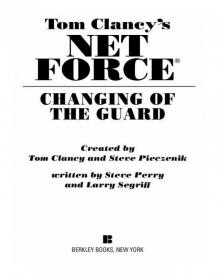 Changing of the Guard
Changing of the Guard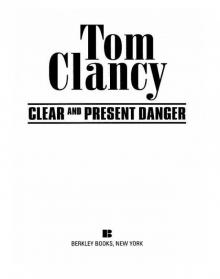 Clear and Present Danger
Clear and Present Danger Hounds of Rome
Hounds of Rome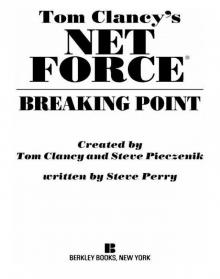 Breaking Point
Breaking Point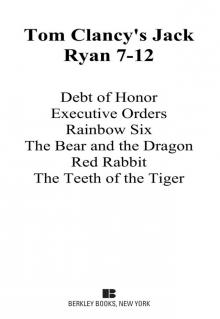 Tom Clancy's Jack Ryan Books 7-12
Tom Clancy's Jack Ryan Books 7-12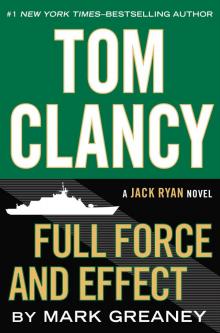 Full Force and Effect
Full Force and Effect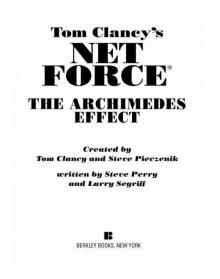 The Archimedes Effect
The Archimedes Effect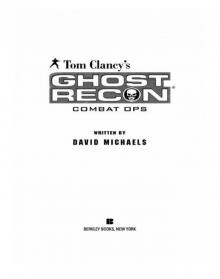 Combat Ops
Combat Ops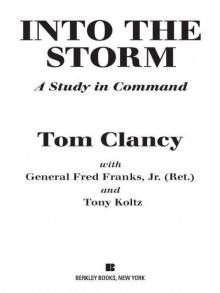 Into the Storm: On the Ground in Iraq
Into the Storm: On the Ground in Iraq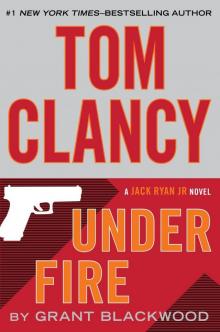 Under Fire
Under Fire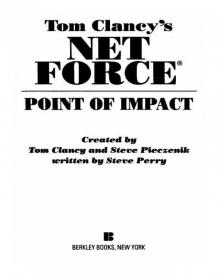 Point of Impact
Point of Impact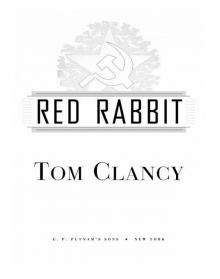 Red Rabbit
Red Rabbit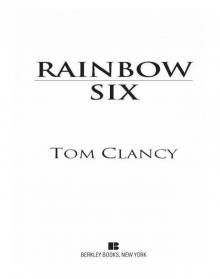 Rainbow Six
Rainbow Six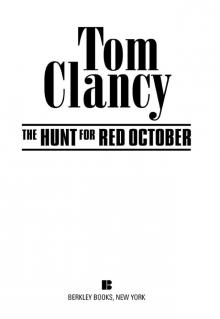 The Hunt for Red October
The Hunt for Red October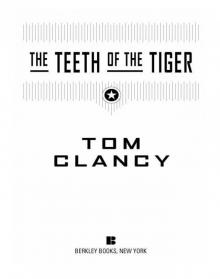 The Teeth of the Tiger
The Teeth of the Tiger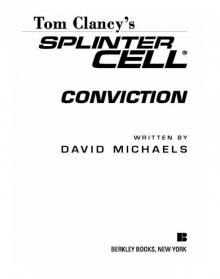 Conviction (2009)
Conviction (2009)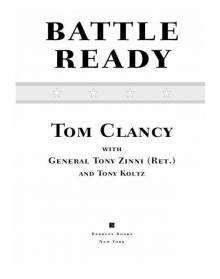 Battle Ready
Battle Ready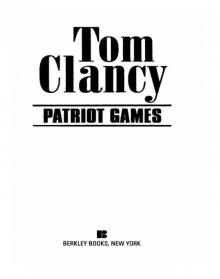 Patriot Games
Patriot Games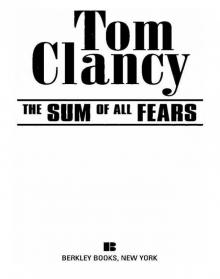 The Sum of All Fears
The Sum of All Fears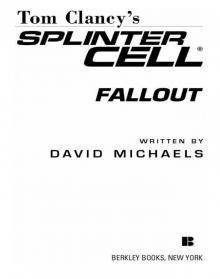 Fallout (2007)
Fallout (2007)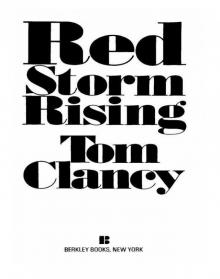 Red Storm Rising
Red Storm Rising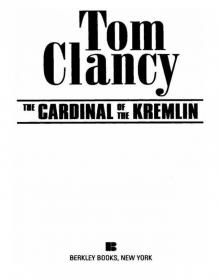 The Cardinal of the Kremlin
The Cardinal of the Kremlin Executive Orders
Executive Orders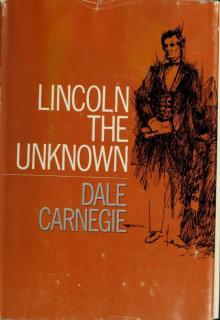 Lincoln, the unknown
Lincoln, the unknown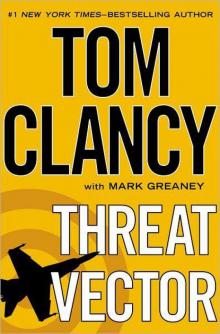 Threat Vector
Threat Vector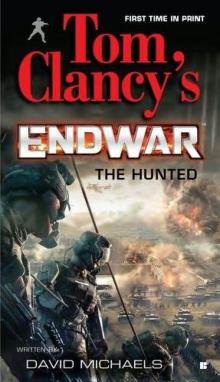 The Hunted
The Hunted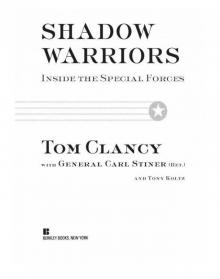 Shadow Warriors: Inside the Special Forces
Shadow Warriors: Inside the Special Forces End Game
End Game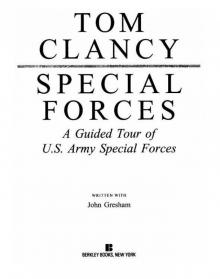 Special Forces: A Guided Tour of U.S. Army Special Forces
Special Forces: A Guided Tour of U.S. Army Special Forces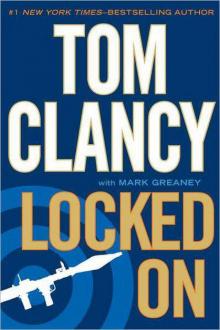 Locked On
Locked On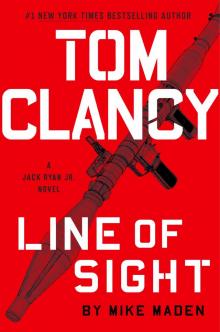 Line of Sight
Line of Sight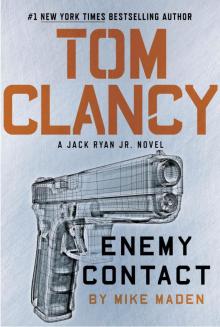 Tom Clancy Enemy Contact - Mike Maden
Tom Clancy Enemy Contact - Mike Maden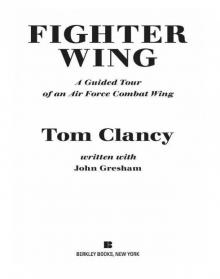 Fighter Wing: A Guided Tour of an Air Force Combat Wing
Fighter Wing: A Guided Tour of an Air Force Combat Wing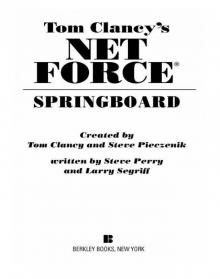 Springboard
Springboard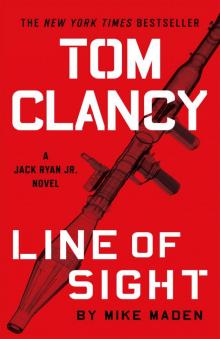 Line of Sight - Mike Maden
Line of Sight - Mike Maden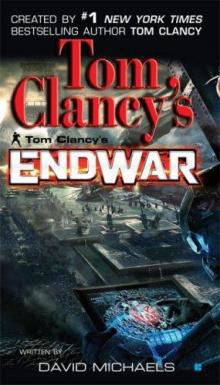 EndWar
EndWar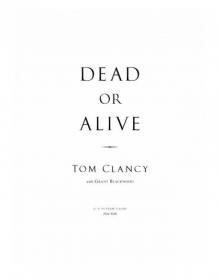 Dead or Alive
Dead or Alive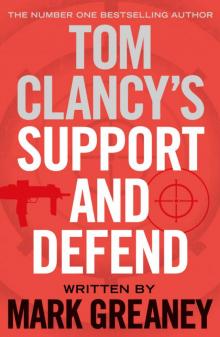 Tom Clancy Support and Defend
Tom Clancy Support and Defend Checkmate
Checkmate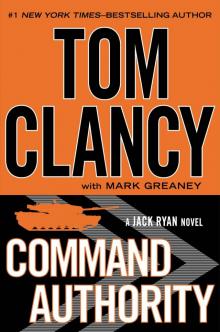 Command Authority
Command Authority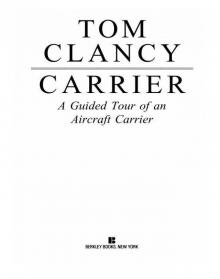 Carrier: A Guided Tour of an Aircraft Carrier
Carrier: A Guided Tour of an Aircraft Carrier Blacklist Aftermath
Blacklist Aftermath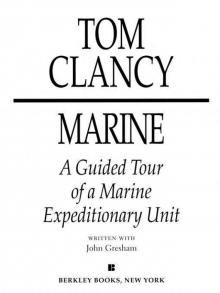 Marine: A Guided Tour of a Marine Expeditionary Unit
Marine: A Guided Tour of a Marine Expeditionary Unit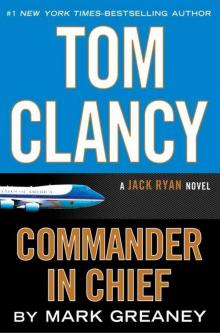 Commander-In-Chief
Commander-In-Chief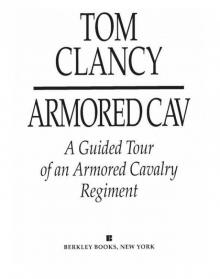 Armored Cav: A Guided Tour of an Armored Cavalry Regiment
Armored Cav: A Guided Tour of an Armored Cavalry Regiment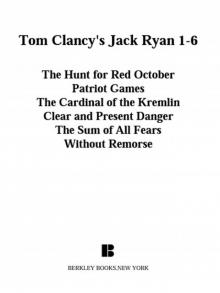 Tom Clancy's Jack Ryan Books 1-6
Tom Clancy's Jack Ryan Books 1-6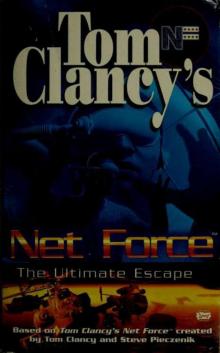 The Ultimate Escape
The Ultimate Escape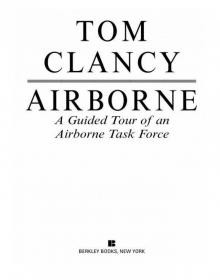 Airborne: A Guided Tour of an Airborne Task Force
Airborne: A Guided Tour of an Airborne Task Force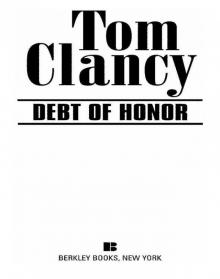 Debt of Honor
Debt of Honor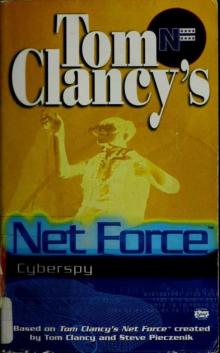 Cyberspy
Cyberspy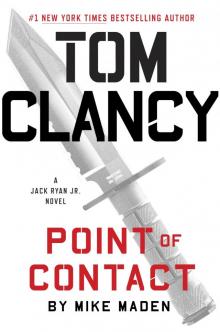 Point of Contact
Point of Contact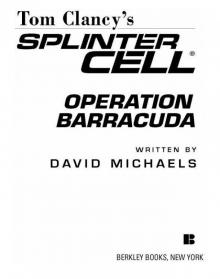 Operation Barracuda (2005)
Operation Barracuda (2005)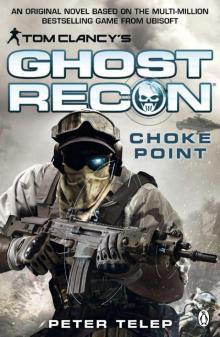 Choke Point
Choke Point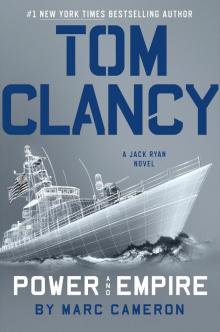 Power and Empire
Power and Empire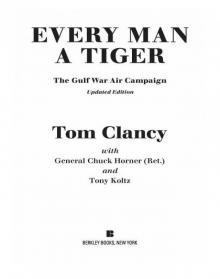 Every Man a Tiger: The Gulf War Air Campaign
Every Man a Tiger: The Gulf War Air Campaign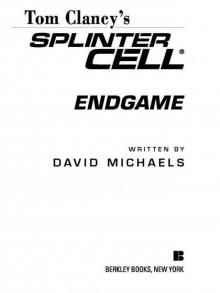 Endgame (1998)
Endgame (1998)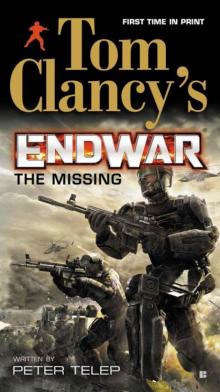 EndWar: The Missing
EndWar: The Missing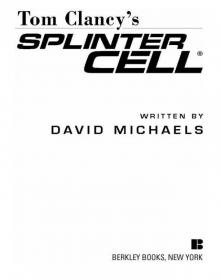 Splinter Cell (2004)
Splinter Cell (2004)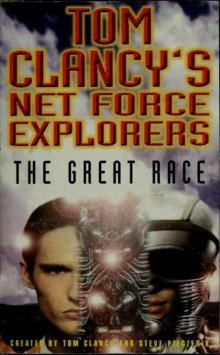 The Great Race
The Great Race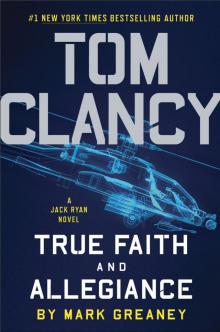 True Faith and Allegiance
True Faith and Allegiance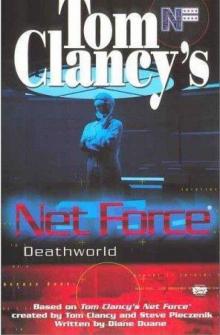 Deathworld
Deathworld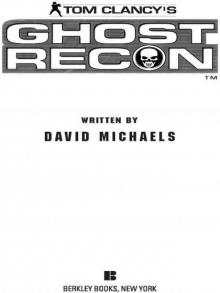 Ghost Recon (2008)
Ghost Recon (2008)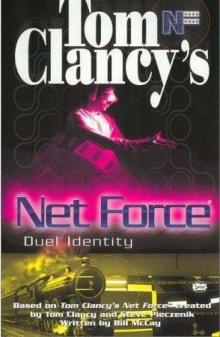 Duel Identity
Duel Identity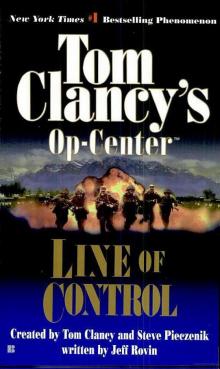 Line of Control o-8
Line of Control o-8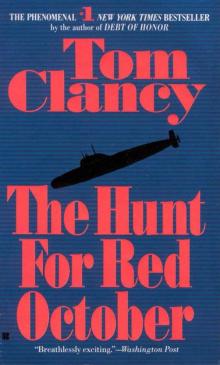 The Hunt for Red October jr-3
The Hunt for Red October jr-3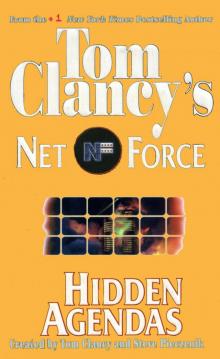 Hidden Agendas nf-2
Hidden Agendas nf-2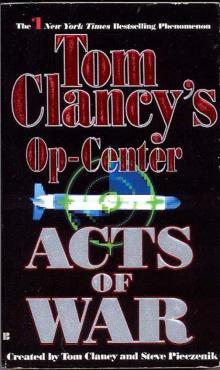 Acts of War oc-4
Acts of War oc-4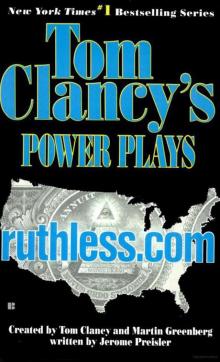 Ruthless.Com pp-2
Ruthless.Com pp-2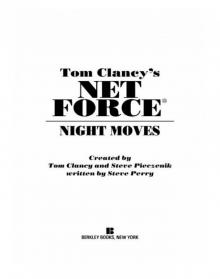 Night Moves
Night Moves The Hounds of Rome - Mystery of a Fugitive Priest
The Hounds of Rome - Mystery of a Fugitive Priest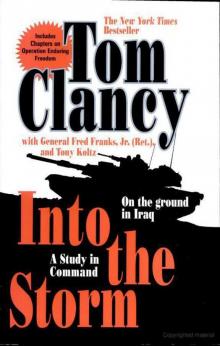 Into the Storm: On the Ground in Iraq sic-1
Into the Storm: On the Ground in Iraq sic-1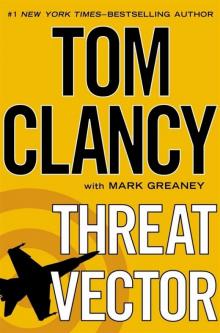 Threat Vector jrj-4
Threat Vector jrj-4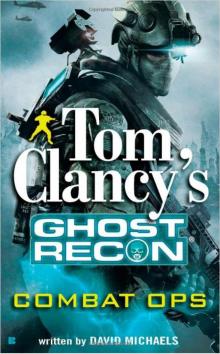 Combat Ops gr-2
Combat Ops gr-2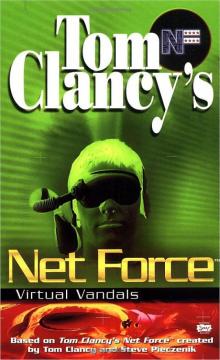 Virtual Vandals nfe-1
Virtual Vandals nfe-1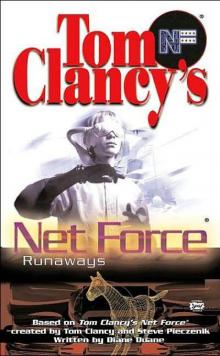 Runaways nfe-16
Runaways nfe-16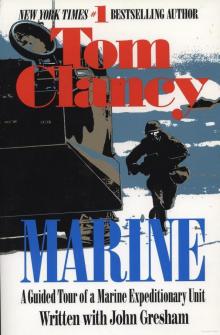 Marine: A Guided Tour of a Marine Expeditionary Unit tcml-4
Marine: A Guided Tour of a Marine Expeditionary Unit tcml-4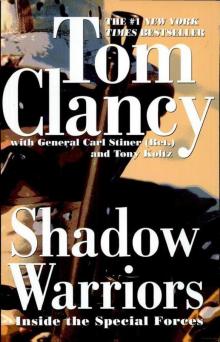 Shadow Warriors: Inside the Special Forces sic-3
Shadow Warriors: Inside the Special Forces sic-3 Jack Ryan Books 1-6
Jack Ryan Books 1-6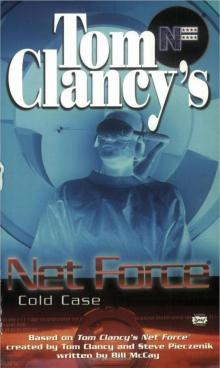 Cold Case nfe-15
Cold Case nfe-15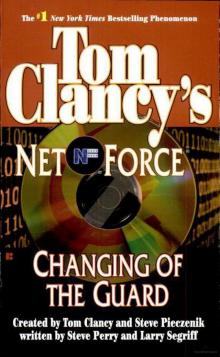 Changing of the Guard nf-8
Changing of the Guard nf-8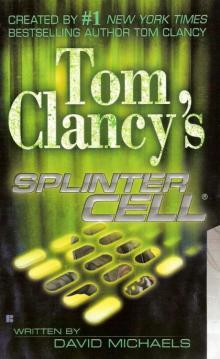 Splinter Cell sc-1
Splinter Cell sc-1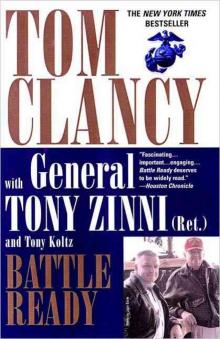 Battle Ready sic-4
Battle Ready sic-4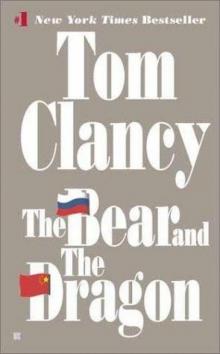 The Bear and the Dragon jrao-11
The Bear and the Dragon jrao-11 Fighter Wing: A Guided Tour of an Air Force Combat Wing tcml-3
Fighter Wing: A Guided Tour of an Air Force Combat Wing tcml-3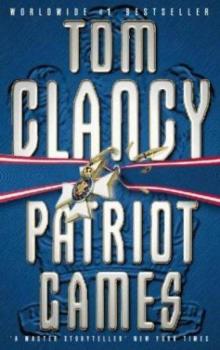 Patriot Games jr-1
Patriot Games jr-1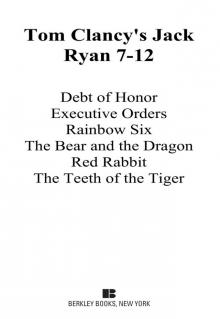 Jack Ryan Books 7-12
Jack Ryan Books 7-12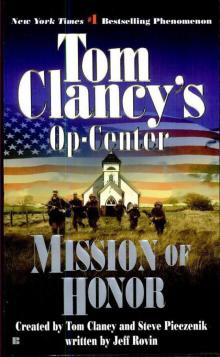 Mission of Honor o-9
Mission of Honor o-9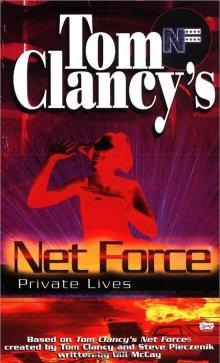 Private Lives nfe-9
Private Lives nfe-9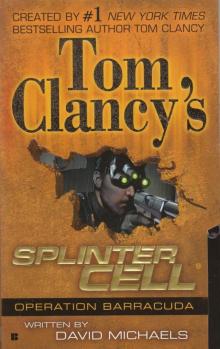 Operation Barracuda sc-2
Operation Barracuda sc-2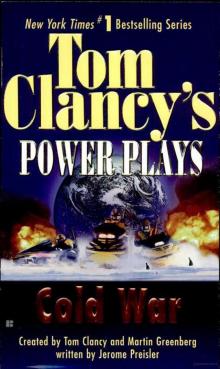 Cold War pp-5
Cold War pp-5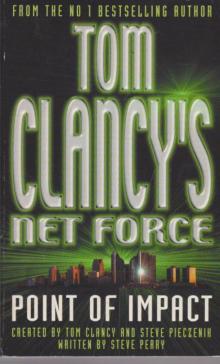 Point of Impact nf-5
Point of Impact nf-5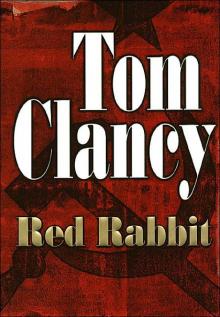 Red Rabbit jr-9
Red Rabbit jr-9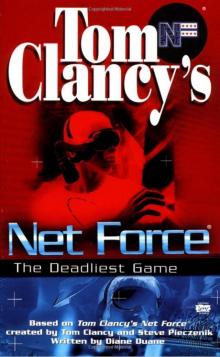 The Deadliest Game nfe-2
The Deadliest Game nfe-2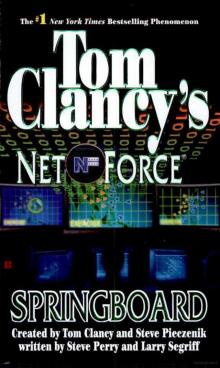 Springboard nf-9
Springboard nf-9 Safe House nfe-10
Safe House nfe-10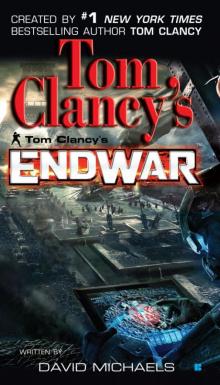 EndWar e-1
EndWar e-1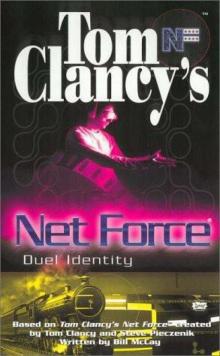 Duel Identity nfe-12
Duel Identity nfe-12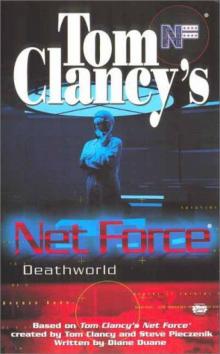 Deathworld nfe-13
Deathworld nfe-13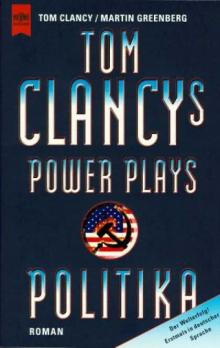 Politika pp-1
Politika pp-1 Rainbow Six jr-9
Rainbow Six jr-9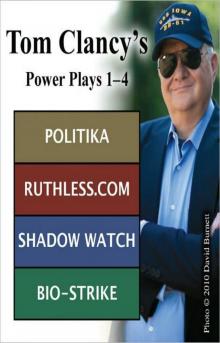 Tom Clancy's Power Plays 1 - 4
Tom Clancy's Power Plays 1 - 4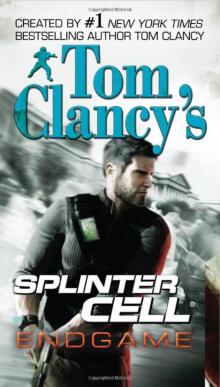 Endgame sc-6
Endgame sc-6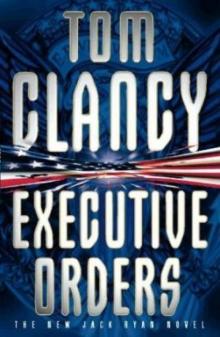 Executive Orders jr-7
Executive Orders jr-7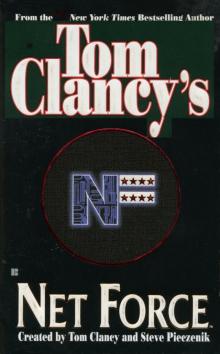 Net Force nf-1
Net Force nf-1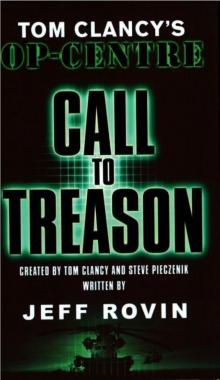 Call to Treason o-11
Call to Treason o-11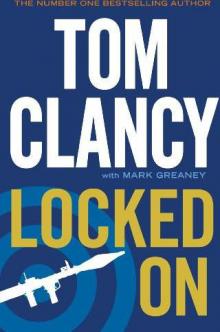 Locked On jrj-3
Locked On jrj-3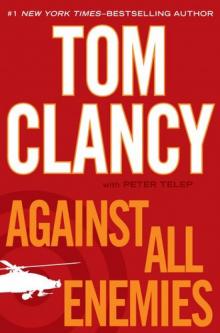 Against All Enemies
Against All Enemies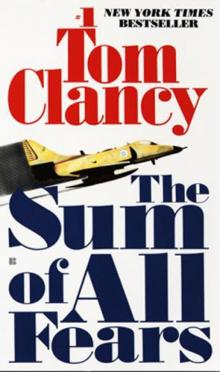 The Sum of All Fears jr-7
The Sum of All Fears jr-7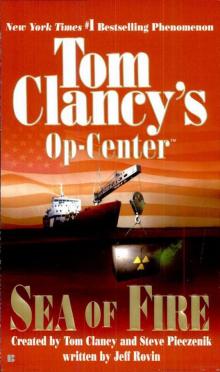 Sea of Fire o-10
Sea of Fire o-10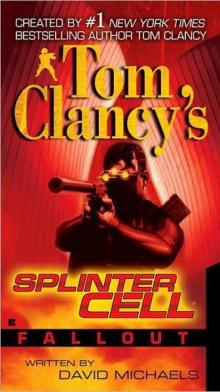 Fallout sc-4
Fallout sc-4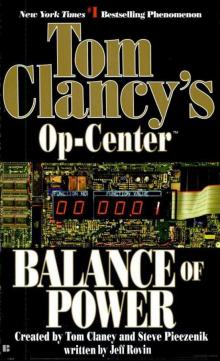 Balance of Power o-5
Balance of Power o-5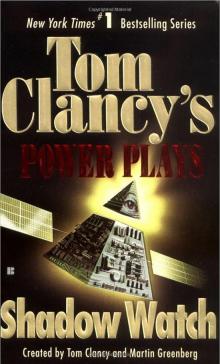 Shadow Watch pp-3
Shadow Watch pp-3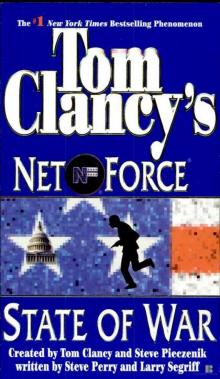 State of War nf-7
State of War nf-7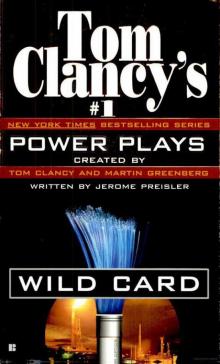 Wild Card pp-8
Wild Card pp-8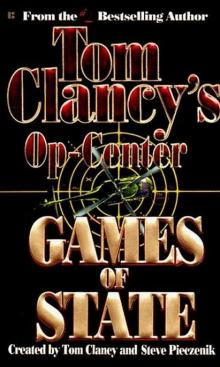 Games of State o-3
Games of State o-3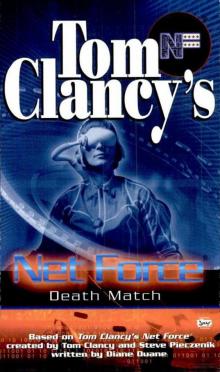 Death Match nfe-18
Death Match nfe-18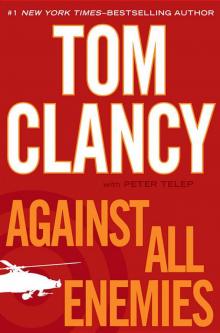 Against All Enemies mm-1
Against All Enemies mm-1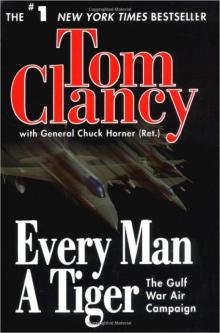 Every Man a Tiger: The Gulf War Air Campaign sic-2
Every Man a Tiger: The Gulf War Air Campaign sic-2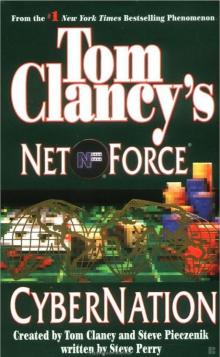 Cybernation nf-6
Cybernation nf-6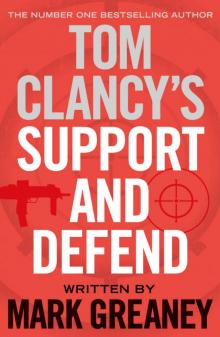 Support and Defend
Support and Defend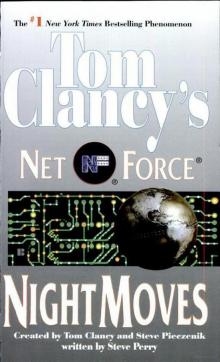 Night Moves nf-3
Night Moves nf-3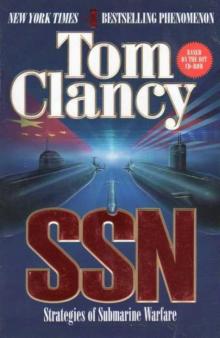 SSN
SSN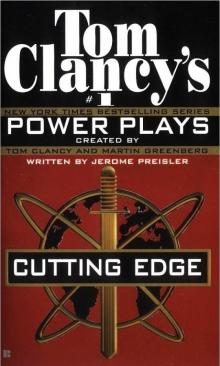 Cutting Edge pp-6
Cutting Edge pp-6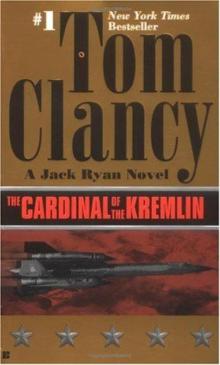 The Cardinal of the Kremlin jrao-5
The Cardinal of the Kremlin jrao-5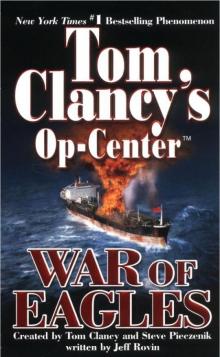 War of Eagles o-12
War of Eagles o-12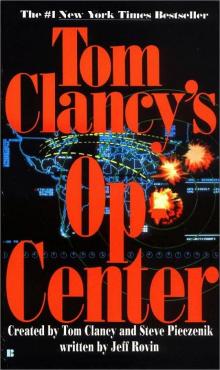 Op-Center o-1
Op-Center o-1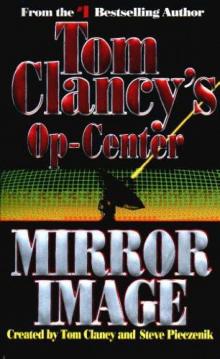 Mirror Image o-2
Mirror Image o-2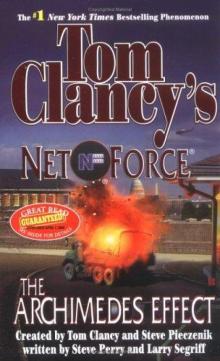 The Archimedes Effect nf-10
The Archimedes Effect nf-10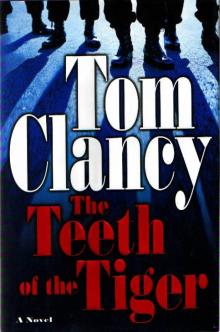 Teeth of the Tiger jrj-1
Teeth of the Tiger jrj-1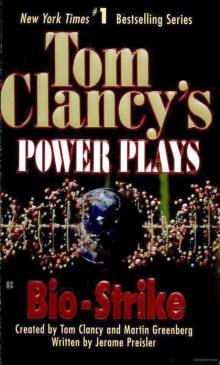 Bio-Strike pp-4
Bio-Strike pp-4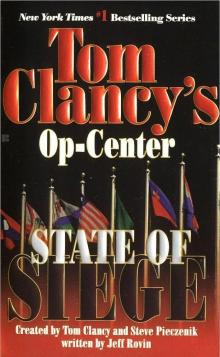 State of Siege o-6
State of Siege o-6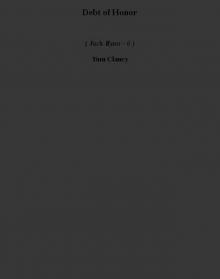 Debt of Honor jr-6
Debt of Honor jr-6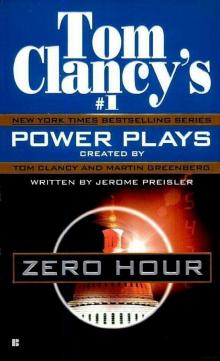 Zero Hour pp-7
Zero Hour pp-7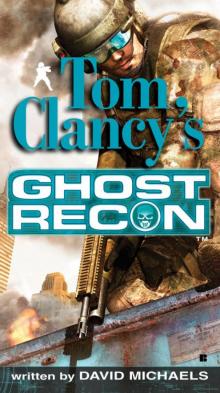 Ghost Recon gr-1
Ghost Recon gr-1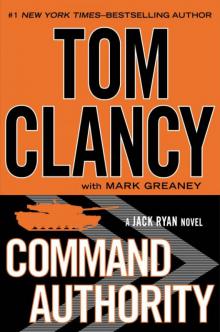 Command Authority jr-10
Command Authority jr-10 Tom Clancy's Power Plays 5 - 8
Tom Clancy's Power Plays 5 - 8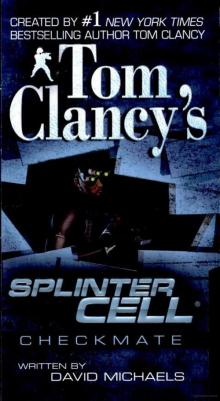 Checkmate sc-3
Checkmate sc-3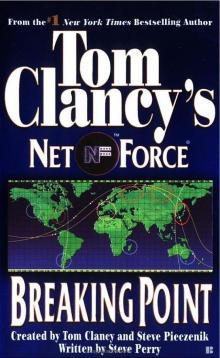 Breaking Point nf-4
Breaking Point nf-4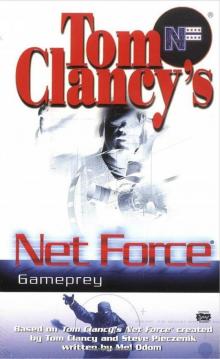 Gameprey nfe-11
Gameprey nfe-11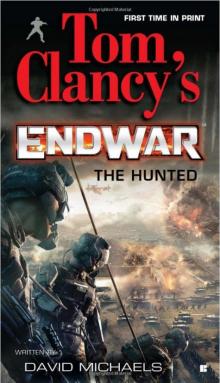 The Hunted e-2
The Hunted e-2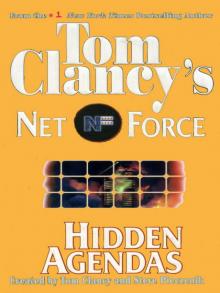 Hidden Agendas
Hidden Agendas Divide and Conquer o-7
Divide and Conquer o-7